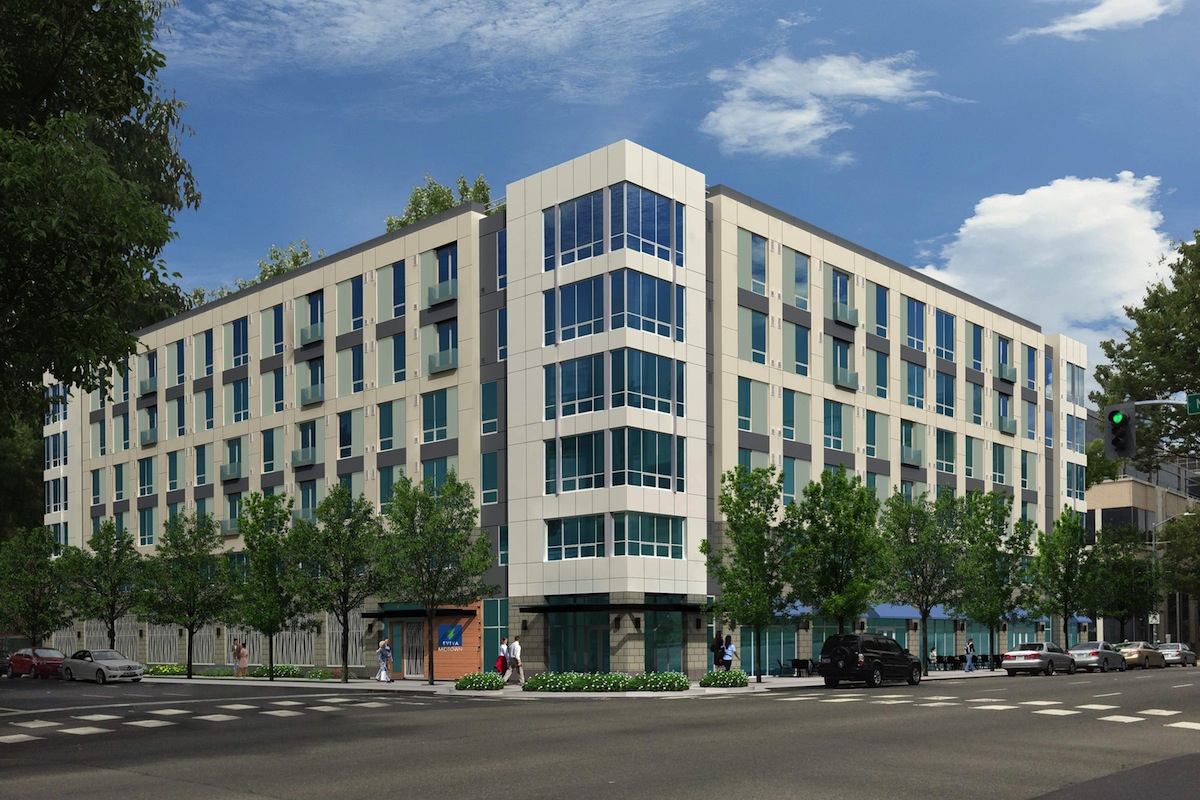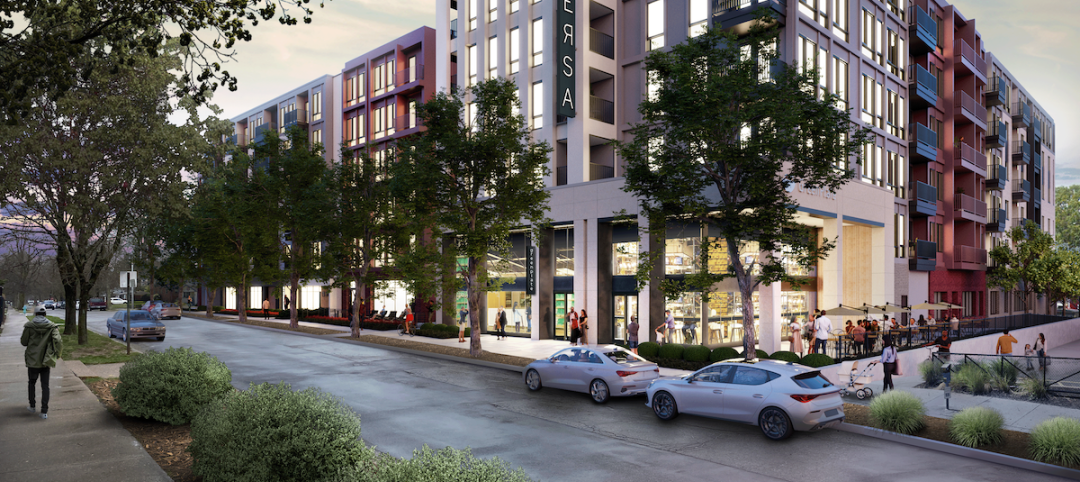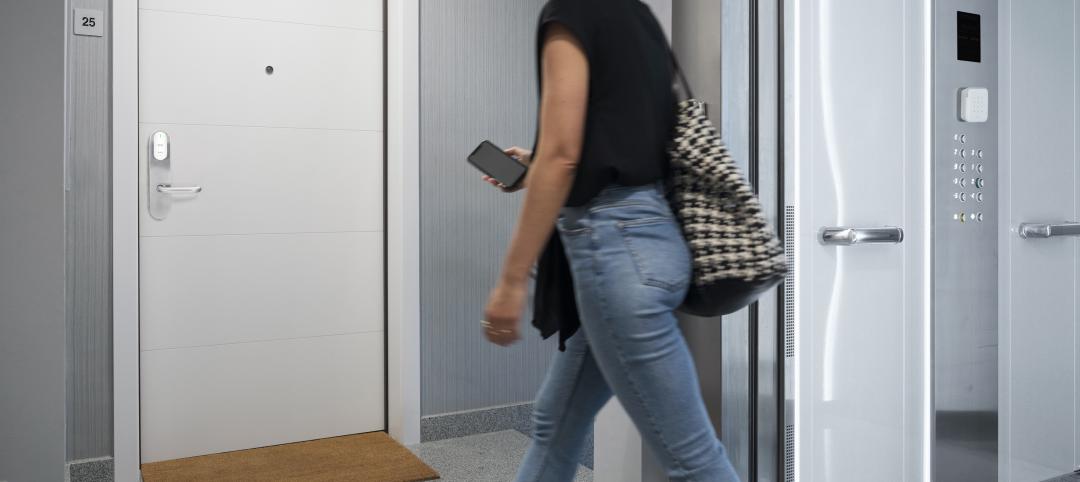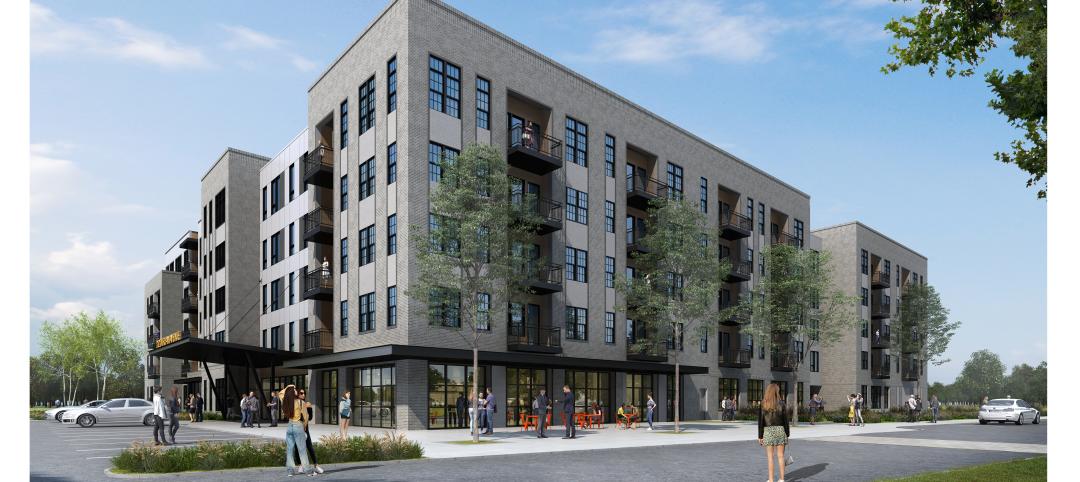This month, Guerdon Modular Buildings, a leading manufacturer of modular housing for the western U.S. and Canada, will start factory construction of modules for Eviva Midtown, a six-story apartment building in downtown Sacramento, Calif., that will have 118 condominium-style one- and two -bedroom rental units, ranging from 700 to 1,200 sf.
Guerdon took over as the module supplier for this project when its developer, Integral Development, decided to switch manufacturers once the previous modular subcontractor encountered planning and scheduling problems soon after the project’s groundbreaking in September 2014.
Eviva Downtown, which was once called The Warren, had been in development for nearly a decade before that groundbreaking. “Eviva is a chance for our deep bench of design, engineering, and construction professionals to demonstrate how our modular construction technology dramatically speeds the build process over traditional on-site approaches without any sacrifice to design or aesthetics,” says Curtis Fletcher, Guerdon’s business development manager.
This building, Sacramento’s largest modular project to date, was initiated by the Capital Area Development Authority (CADA). Integral developed this project in partnership with Sacramento-based investment firm LDK Ventures. Tricorp Hearn Construction is the GC.
During the delay caused by the modular musical chairs, Integral and CADA revisited their plans for this project and made a number of modifications and structural changes to its design. To make it more distinct from neighboring buildings, they widened Eviva’s balconies, made its corners slightly taller than the rest of the project, and added a broader color palette.
The building team chose Guerdon because its reputation for handling large-scale projects and completing modules on time.
“Guerdon has integrated so closely with our staff that every aspect of the construction process has been worry-free, from the design and build to mapping out the delivery and installation,” says Dave Bruss, chief operations officer at Tricorp Hearn, which is based in Sacramento. On-site module installation is scheduled to begin in August.
Located on the corner of 16th and N Streets, Eviva is part of an ongoing revival of Sacramento’s downtown area. For example, the $31 million renovation and restoration of the city’s 89-year-old, 68,000-sf Sacramento Valley Station—the busiest Amtrak depot west of Chicago—is one of the centerpieces of a large downtown redevelopment, which includes a Sacramento Entertainment and Sports Complex accompanied by a 16-story mixed-use hotel, retail, and residential complex designed by Los Angeles-based Rios Clementi Hale Studios. AECOM is the lead architect for the arena, which is scheduled to open October 2016, according to The Architects Newspaper.
Related Stories
Multifamily Housing | May 30, 2023
Milhaus, Gershman Partners, and Citimark close on $70 million multifamily development in Indy
Versa will bring 233 studio and one- and two-bedroom apartments to Indianapolis's $271 million, Class-A Broad Ripple Village development enterprise.
Multifamily Housing | May 23, 2023
One out of three office buildings in largest U.S. cities are suitable for residential conversion
Roughly one in three office buildings in the largest U.S. cities are well suited to be converted to multifamily residential properties, according to a study by global real estate firm Avison Young. Some 6,206 buildings across 10 U.S. cities present viable opportunities for conversion to residential use.
Multifamily Housing | May 19, 2023
Biden administration beefs up energy efficiency standards on new federally funded housing
The Biden Administration recently moved to require more stringent energy efficiency standards on federally funded housing projects. Developers building homes with taxpayer funds will have to construct to the International Energy Conservation Code (IECC) 2021 for low-density housing and American Society of Heating, Refrigerating and Air-Conditioning Engineers ASHRAE 90.1 for multi-family projects.
Sponsored | Multifamily Housing | May 19, 2023
Shear Wall Selection for Wood-Framed Buildings
From wall bracing to FTAO, there are many ways to secure the walls of a building. Learn how to evaluate which method is best for a project.
Sponsored | Multifamily Housing | May 17, 2023
The Key To Multifamily Access Control — Consistent Resident Experiences
Explore the challenges of multifamily access control and discover the key to consistent user experiences with a resident-first approach and open platforms.
Affordable Housing | May 17, 2023
Affordable housing advocates push for community-owned homes over investment properties
Panelists participating in a recent webinar hosted by the Urban Institute discussed various actions that could help alleviate the nation’s affordable housing crisis. Among the possible remedies: inclusionary zoning policies, various reforms to increase local affordable housing stock, and fees on new development to offset the impact on public infrastructure.
Multifamily Housing | May 16, 2023
Legislators aim to make office-to-housing conversions easier
Lawmakers around the country are looking for ways to spur conversions of office space to residential use.cSuch projects come with challenges such as inadequate plumbing, not enough exterior-facing windows, and footprints that don’t easily lend themselves to residential use. These conditions raise the cost for developers.
Multifamily Housing | May 12, 2023
An industrial ‘eyesore’ is getting new life as an apartment complex
The project, in Metuchen, N.J., includes significant improvements to a nearby wildlife preserve.
Senior Living Design | May 8, 2023
Seattle senior living community aims to be world’s first to achieve Living Building Challenge designation
Aegis Living Lake Union in Seattle is the world’s first assisted living community designed to meet the rigorous Living Building Challenge certification. Completed in 2022, the Ankrom Moisan-designed, 70,000 sf-building is fully electrified. All commercial dryers, domestic hot water, and kitchen equipment are powered by electricity in lieu of gas, which reduces the facility’s carbon footprint.

















